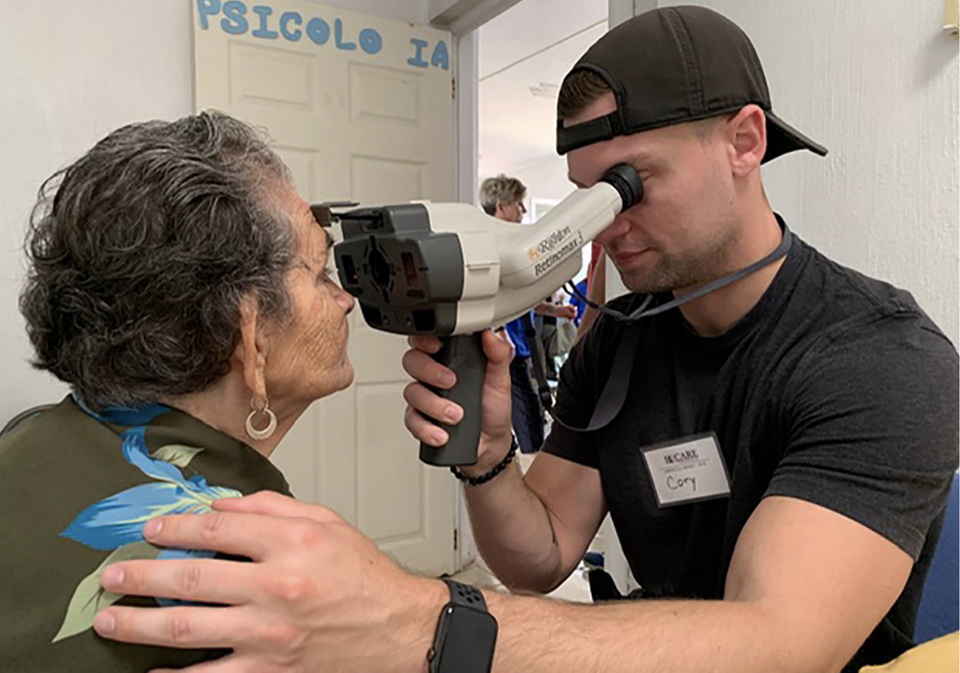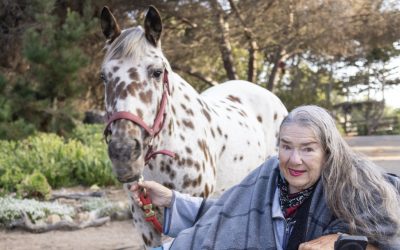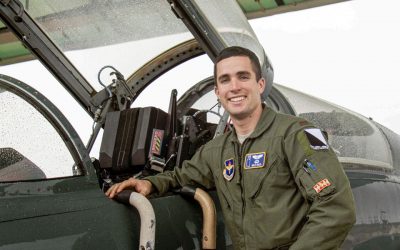“Do you live in a house, ” I asked? “No, la calle (the street), ” he said. I knew that without asking. People with disabilities end up desperately poor in countries like Honduras. And poor people end up on the street. It was his lot. He reached for my hand and held it between both of his. He leaned in close to me. With his eyes greatly magnified by the glasses I had just given him he slowly said these words, the only words he had spoken in English, “God. Bless. You.”
From Puedo Leer (I Can Read!), the story of I CARE in San Pedro Sula by Volunteer Dave McClure
THAT’S WHAT THIS WORK IS ALL ABOUT,” SAID KLAUS Schumann, a volunteer of many trips to Mexico, Central and South America who recently returned from Compostela, Nayarit, Mexico, where thousands of pairs of previously worn and discarded eyeglasses were distributed to nearly 2,000 recipients. “It’s all about the smiles, the thank you’s, the gratitude,” he said of reactions from patients whose vision was restored or improved as a result of I CARE INTERNATIONAL efforts.
Traveling mid-March with Klaus to evaluate patients and distribute the appropriate donated eyewear were some three-dozen volunteers including optometrists, opticians, doctors, nurses and lay workers who performed critically needed staffing, interpreting and schlepping functions.
Klaus, interviewed for this story along with his wife Jay Adams and volunteers Holly Naylor and Leigh Livick, had returned just days before brimming with still-fresh memories of that trip; their collective experience includes having held dozens of clinics throughout Mexico, Central and South America. Still a little travel-weary but excited to share the story of the success of I CARE INTERNATIONAL, they were happy to talk about the history of the organization and offer some of their own personal insights of why their work makes such a difference.
It all started with Dr. Phil Ortiz, an optometrist in Morris, IL along with the late Dr. Chuck Cools, who together founded I CARE INTERNATIONAL in 1989. Jay related that earlier in that decade, Dr. Ortiz was inspired by a movie he’d seen, El Norte that, according to the film’s website, “Relates the story of a Guatemalan family that fled persecution at home and journeyed north the length of Mexico with a dream of finding a new home in the United States. El Norte (1983) tells their story with astonishing visual beauty, with unashamed melodrama, with anger leavened by hope. It is a Grapes of Wrath for our time.”
After seeing the film, according to Jay, Dr. Ortiz said, “That movie is the story of my family.”
The Ortiz family made its way to the U.S. and lived for a time in an abandoned railroad car. From those humble beginnings, Phil Ortiz went on to become a well-known optometrist in Illinois who, grateful for his bountiful life in this country, wanted to help the less fortunate and began by providing recycled prescription eyewear to Native American communities. After I CARE INTERNATIONAL was formed, the organization focused on serving populations south of the border where little or no eye care was available and where the eyewear obtained from the Lions Club (and other sources) could be distributed to large numbers of people. I CARE INTERNATIONAL is based in Illinois with a satellite operation in San Luis Obispo—thanks mainly to the efforts of Dr. Ortiz’s daughter Dawn Ortiz-Legg and her connections to local civic organizations—and is described as a non-religious, non-political, non-discriminatory charitable organization with a goal of helping others improve their quality of life by providing better vision and health.
The process of transferring cast-off glasses to new recipients is incredibly complex and is achieved in what is referred to as a “12- step program”: from intake to final fitting on a happy recipient takes hundreds of people, thousands of hours, lots of money and incredible perseverance. Encompassing mundane tasks like cleaning, sorting, labeling and packing to hauling boxes and bags through airports and buses, dealing with (sometimes) frustrating customs issues, making travel arrangements for dozens of people in multiple cities … and, those are the easy parts.
A key factor in pulling off what is actually a rather delicate enterprise—we are talking about working with eyeglasses after all—is the human power required. This is where a number of volunteer optometrists and other professionals, civic and government organizations, student groups, the medical and business communities—along with a good dose of luck—come in. With all these entities in place, it’s then, as Dave McClure says in his book, “All about the flow.”
The flow starts with identifying the next clinic location. Leigh said, “Typically a board member reaches out to someone with contacts in a town or country where there is a need such as a Rotary Club that has connections in another country (Rotary Club of San Luis Obispo’s sister Club is in Compostela, for example) and then a formal invitation from that country’s government to I CARE is issued.” Glasses—typically between 8,000 – 12,000 pair—are obtained from the Lions Club in Vallejo, CA distribution center (where they have over a million pair in inventory).
Once the actual eyewear is in hand, volunteer students at Cal Poly (Make a Difference Day) and Pacific Beach High students sort, wash, dry, bag and label most of the glasses. Paso Robles AVID students then “neutralize” the glasses using lensometers to determine the prescription on each item. Klaus pointed out that many Latino students show up to help out as they are moved to help those in their home country. The students put in hundreds of hours at Paso Robles High School where they work twice a week after school for 3 months and earn required community service.
While all this is going on, trip leaders are chosen to tend to the task of coordinating air travel and trip details, purchase insurance and ensure the appropriate number of professionals will be available. (All persons pay their own expenses.) Once the group is headed for their destination, the next challenge can prove tricky: Customs. Klaus said there’s a lot of detailed paperwork required to transport their equipment, medications and the glasses. Often the duty amount changes without warning: higher or lower such as one dollar per pair up to three dollars per pair. “When you have 2,000 pair, that’s a lot of duty,” he said. “But, since each traveler has a duty free amount, they dole out the parcels among the group and hopefully there’s not much to pay at the end.” Glitches do happen, however. At one checkpoint, the customs officers were completely inflexible and wanted to dump out all the glasses for a visual assessment; a sight of horror to those who knew how important it was to ensure all the work that had been done to categorize the glasses was relevant to maintaining “the flow.” One time, their cargo was confiscated. But still, the success stories prevail and, all in all, the group said they love what they do.
Jay, a forensic psychologist said that for her, the trips are a spiritual event. She and Klaus have travelled to many of the clinics including Guatemala, Peru, Ecuador, El Salvador and Mexico. Leigh, who posts photos and information from the trips on social media, says the trips are a “break from the day to day grind” and she loves the people she meets. A special reward for Holly is that after the clinic, people will walk by waving to you with their new glasses. “There are so many thank you’s,” she said. Klaus added, “In Guatemala, 90% of the people we visited don’t have access to health care of any kind. Some of those people got eyeglasses for the first time in their lives!”
Illustrating the magnitude of I CARE’s missions with the desire to continue the endeavor, Dave McClure narrated this scene in his book: “The toilets didn’t flush. No tap water. This day brought tensions to a head. There was a disagreement between the (local) army lieutenant in charge and our docs. The military insisted we stop the clinic until order was restored. We were losing time and had so many people to serve. It was a tough mission, one of the most difficult. Try taking 37 gringo volunteers, most who’ve never worked together, mix them with various levels of authority and serve 2,000 people in three days. It’s not easy. But we didn’t come here for easy; we came there to help people. And we certainly accomplished that.”





